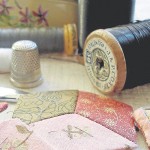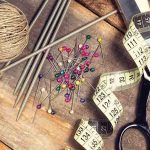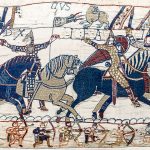The long winter nights and the colder weather has made me think of what activities and events my social companion and I can look forward to over the winter.
Walking is always an option, of course, but for us, this has now become an activity that is very dependent on the weather. Our days of sloshing through the mud, rain and wind are well and truly over! Trips around stately homes and gardens are something we always enjoy, but what about something a bit different?
I was amazed at how many people attended the Festival of Quilts in August and this got me thinking about other craft and design shows. It is true to say that we have more spare time and leisure time now than at any point in history. Technological advances in domestic appliances, communication and transport have given us more time to explore our own creative side and to get out and appreciate the creativity of others.
Diversely creative
The UK is widely regarded as one of the most diversely creative countries in Europe and consequently there is an enormous range of fairs and shows to go to throughout the year. We have a staggering number of highly talented and creative makers who show their work – and sell it – in venues ranging from small local craft fairs to large crafting shows and bespoke craft galleries. Crafts can also include activities relating to our living heritage – willow basket weaving, spinning, weaving and forge work, to name but a few. Gone are the days when ‘crafting’ was seen as a niche activity for either arty types or grannies.
The Crafts Council is an organisation that actively supports, and helps to develop, those involved in crafts of all genres. Their website tells us that crafting and making currently contributes £3.4 billion to the economy; a staggering amount. There are a bewildering range of guilds and organisations covering familiar activities such as beadwork, decoupage, wood turning and lace making and some less well known activities such as miniature doll making, body painting and straw craft. If you are interested in a specific craft then it is worth checking out the internet to find the relevant guilds and organisations and see what’s on and where.
These shows and fairs showcase a bewildering amount of bespoke, and sometimes unusual, work from some very creative people. Items range from the purely decorative to the functional – something for everyone. Some of the larger events also offer workshops and talks, so it’s always worth checking before you go, in case attendance at these sessions needs to be booked in advance. Events, both large and small, sometimes have stalls selling the materials and equipment needed for some of the crafts, should you be inspired to try your hand. Indeed, a visit can often encourage us to take up a new hobby.
Heritage crafts
There are many benefits to taking up, or continuing to undertake, some form of craft. Depending on which one you choose to do, they might include the following:
Knitting, lace making, embroidery or cross stitch, woodturning, dolls house making, weaving, basket making, jewelry making or glass engraving; the list is endless.
For most of our history, making things by hand was the norm, and the skills were passed from one generation to the next. In this digital age, when so many spend their days in front of a computer screen, the thrill and sense of satisfaction in taking time to make something yourself is that much more important.
The Heritage Crafts Association is the advocacy body for traditional heritage crafts. Working in partnership with the government and key agencies, it provides a focus for craftspeople, groups, societies and guilds, as well as individuals who care about the loss of traditional craft skills, and works towards a healthy and sustainable framework for the future. More information can be found on their website at heritagecrafts.org.uk




